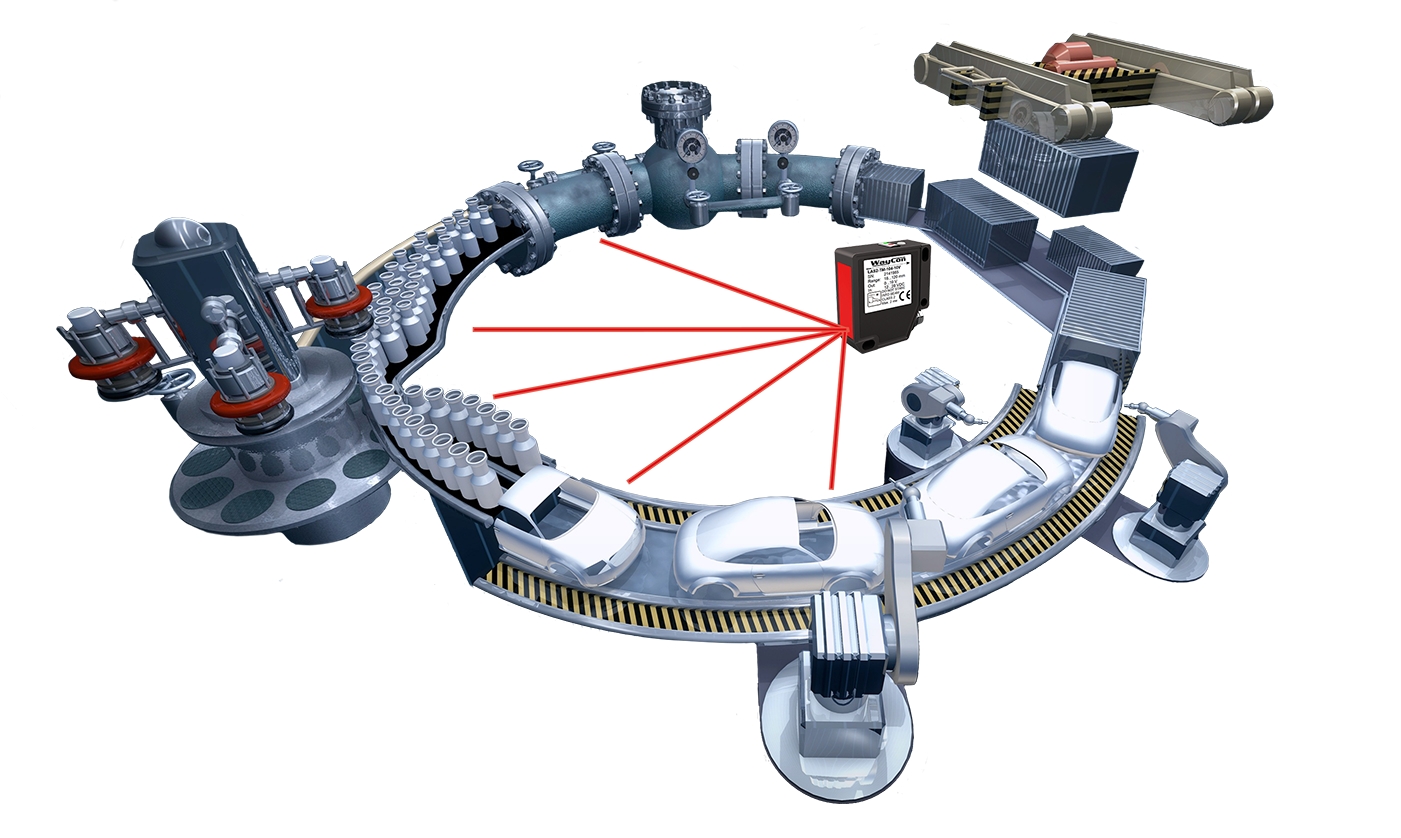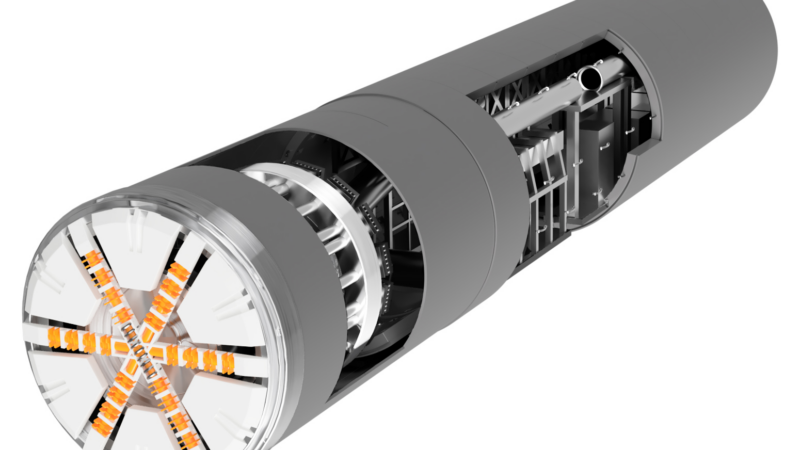Laser sensors (also optoelectronic sensors) are used in many fields of industry and research, to measure distances reliably and quickly. In doing so, triangulation, runtime measurement or phase shift methods are normally used for the measurement. At the same time, each of these measurement methods has different advantages and disadvantages.
WayCon Positionsmesstechnik GmbH, as a specialist in distance measurement for customized measurement applications, offers all laser measurement methods, to ensure the selection of the optimal sensor.
Laser triangulation
When using the laser triangulation method, the emitter of the sensor emits a continuous laser beam onto the object of measurement. The laser point on the object of measurement, which has a diffuse light scattering, is then detected by the receiver of the sensor. The distance between the sensor and object of measurement is calculated based on the angle between the diffuse light emitted and received. The advantages of the laser triangulation method are the high measurement frequency and the accuracy that can be achieved using this method. The range of this measurement method is limited because of the setup required by an emitter and a separate receiver. If the distance between the object of measurement and the sensor increases, the distance between the emitter and the receiver must increase as well; therefore, the triangulation method is only suitable for shorter measurement ranges.
The LAW laser sensors are an example of sensors that work with the triangulation principle. The LAW series is distinguished by its high measurement frequency of 30 kHz. The high-precision sensor measures a measurement range of 4 mm with a linearity of 2 µm.
Runtime measurement
A short light pulse is emitted during runtime measurement that is reflected back to the sensor by the object of measurement. To achieve a reliable reflection, a reflective foil is used for this in the case of greater distances. Thanks to the consistency of the speed of light, the distance between the sensor and the object of measurement can be easily calculated based on the time between emission and receipt of the light pulse. It is possible to measure greater distances than with the triangulation method because the emitter and receiver can be close to one another. However, accuracy and resolution suffer due to the sophisticated time measurement used with this method.
With a measurement range of up to 50 m, the LAV laser runtime sensor offers a considerably broader measurement range than the triangulation sensors. The operating temperature of -30 to +55°C also enables applying the LAV laser runtime sensor in areas in which other laser sensors can no longer be used.
Phase shift measurement
The phase shift measurement method takes advantage of the wave properties of light. In the process, the phase of the laser beam reflected by the object of measurement is compared to the one emitted laser beam. The distance to the object of measurement can be determined with extreme accuracy based on the phase shift between both laser beams. As in the case of runtime sensors, phase shift sensors reach extremely broad measurement ranges, but they are significantly more accurate than runtime sensors. However, laser distance sensors that measure using phase shift comparison are considerably slower because of the more complex evaluation process.
The laser distance sensor LLD-150 measures according to this method. At the same time, the sensor achieves impressive ranges up to 150 m and has a linearity of +/- 3 mm despite the great distance.
Combining measurement methods
Due to the fact that the setup of the emitter and receiver are similar for the runtime and phase shift measurement methods, these methods and consequently, also their advantages, can be combined well. Laser distance sensors in the LDI series enable precisely that. With a measurement range of 500 m, the sensors achieve greater distances than all other sensors in their class. At the same time, they are not only extremely accurate with a linearity of up to +/- 1 mm and a measurement frequency of 50 Hz but also comparatively fast. Their repeat accuracy of merely +/- 0.3 mm is even more impressive.
A reflective foil, which provides a high degree of reflection, is attached to the object of measurement, to utilize the full range of the LDI laser sensor. If the full range is not required for the application, the measurement can also be conducted on other surfaces; this reduces the measurement range to 100 m. At the same time, the laser sensor also exhibits a very good performance on difficult surfaces. Even hot surfaces such as those found in the steel industry are not a problem for the LDI. Furthermore, the small housing (140 mm x 78 mm x 48 mm) and the large selection of output signals (0…20 mA, RS232, RS422, RS485, SSI, ProfiNet, EtherNet and EtherCAT) enable easy installation and system connection for a multitude of applications.
Sample applications of these measurement methods can be found on our laser sensor application page.
Further sensors that utilize these methods can be found on our laser sensors product page.
WayConPositionsmesstechnik GmbH has been developing and manufacturing precision sensors for position and distance measurement since 1999. As an innovative company with headquarters in Taufkirchen near Munich and a branch in Brühl near Cologne, we sell our products all over the world. Our goal is to provide our customers with the best possible measurement technique solution: from high-quality sensors from the standard range to customer-specific solutions, from prototype to series production – for the most varied applications in industry and research. The products made in Taufkirchen are subject to rigorous quality standards and every single one is delivered to our customers with a calibration certificate.
Contact
Waycon Positionsmesstechnik GmbH
Marcus Venghaus
Mehlbeerenstr 4
82024 Taufkirchen
Phone: +49 89-67-9713-0
E-Mail: info@waycon.de
Url: https://www.waycon.biz
Die Bildrechte liegen bei dem Verfasser der Mitteilung.







